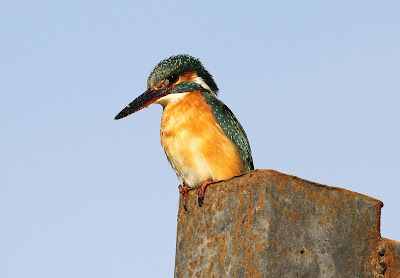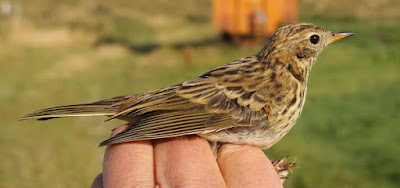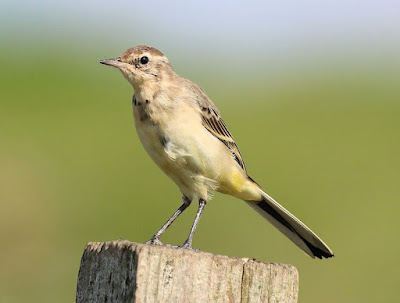There's is a lot of rain due today following a rather "lively" week. Lively as in mixed and unpredictable rather than intellectually stimulating, a week of windy days and restricted activities.
So for now I’m stuck in at the computer and able to answer a question posed by a blog reader recently - “How are you at counting pickles in a pickle jar and candy in a candy jar...guess that would make for good practice. How do you get your numbers anyway...had to ask?”.
I’d never thought that counting pickles in a jar could be similar to counting birds but in actual fact the same principles apply.
Here is a summary of bird counting techniques methods which I and many other birders use when out in the field. I dotted the text with photographs of groups or flocks of birds for readers’ on-going practice and consideration.
Many birding projects ask participants to count birds, and most birders I know enjoy keeping a count of the birds they see whenever they are in the field. Counting each individual bird seen can be challenging, but it can also provide valuable information for scientific research. As populations of birds change, mostly downwards, fluctuations in counts at the same locality at the same time of year may indicate shifts in pollution levels, habitat loss, migration timing and more.
One is simple even if it does fly off as soon as the shutter activates. After that things become more difficult.
Little Egret - One
Woodpigeons - How Many?
Annual projects such as the Breeding Bird Survey, Common Birds Census, Garden Bird Survey, BirdTrack, Wetland Bird Survey or the Ringing Scheme are different types of bird census projects which over several years accumulate a massive amount of data about numbers of birds in different locations. The data would be impossible to gather without the help of every participant. However the more accurate a count is, the more useful the data is for conservation projects and ornithological research.
There are various ways to count birds depending on the birds present, the size of the flock and how the flock is behaving. Techniques include:
Individual Counts: When just a few, recognisable birds are present, each individual bird can be easily counted without fear of major miscalculations. This basic one-two-three technique works best when the birds are clearly seen and slow moving so that individual birds will not be counted multiple times.
Grouping: Counting birds in numeric groups is an easy method for totalling small or medium-sized flocks. With practice birders can easily learn to count birds not one by one, but five by five, ten by ten, and with practice, fifty by fifty. This allows for a faster count while still keeping the increments small enough for precise numbers.
Grouping: Counting birds in numeric groups is an easy method for totalling small or medium-sized flocks. With practice birders can easily learn to count birds not one by one, but five by five, ten by ten, and with practice, fifty by fifty. This allows for a faster count while still keeping the increments small enough for precise numbers.
Oystercatcher - 240/260?
Grids or Counting in Blocks: This counting system is most often used with larger, single species flocks where the birds are relatively stationary. The field of view is divided into a grid or block of even sections where the birds in one section are counted as close to individually as possible. Multiplying this count by the number of grids or block sections in the flock can give a reasonable estimate of the total number of birds.
Whooper Swan - circa 65/70?
Selective Counting: When a large flock of birds has some obvious mixed species, it may be possible to selectively count all the birds easily. First, pinpoint the more unusual birds in the flock and count them individually, then use the grid/block technique on the bulk of the birds. This provides not only a good count of the flock size, but also represents the diversity of the birds present.
Proportions: When a mixed flock has too many species for selective counting, a good estimate can be made by counting proportions of the species present. Similar to the grid/block technique, only one section of the flock is counted, but each different species is noted individually, and the proportions are used to calculate the total number of birds of each species in the entire flock. This technique is best when a flock is heavily mixed and each species is spread throughout the flock.
Timing: When a flock is moving quickly, it can be impossible to create a grid/block or to count birds individually, since the movement will obscure other birds and make any estimate less accurate. A timing count can be used by focusing on a fixed point the flock is passing, and counting the number of birds passing that point in a certain period of time, such as a few minutes. Then the entire amount of time it takes for the whole flock to pass is noted, and the count is multiplied by the number of increments in that overall time to gauge its full size. This system can also be employed during times of visible migration or massed flight e.g. Swallows, Meadow Pipits or finches passing overhead or through a fixed point.
Wigeon - circa 70?
Photographs: A digital photograph can be used for an accurate count if the entire flock can be photographed. The photo is then manipulated on a computer or printed out and individual birds are marked off as they are counted. This is a time-consuming method but can be very precise for a reliable count when high levels of accuracy are necessary.
Sanderling - 65/70?
Practice is essential to develop and refine bird counting skills. The more frequently someone counts birds, the more comfortable they will be with each count made while knowing the data collected is accurate and therefore more valuable. Other ways to enhance the methods of counting birds include:
Maintaining a notebook at hand to write down a record of birds counted, particularly when counting over a longer period of time. With notes there is less need to “guesstimate”.
Allow for density when counting flocks, particularly when using grid or timing techniques. Birds are often less dense on the outer edges of the flock, and if grid sections are not balanced a count can be significantly off.
Work to be as accurate as possible, but when necessary, choose to underestimate rather than overestimate the numbers of birds seen. This will help correct for any inadvertent errors, such as birds that were counted more than once.
Counting birds can add a new dimension to birding, by not only keeping track of the numbers of birds seen but also making the birding so much more purposeful and useful for conservation science.
Remember that counting birds may not be an exact science but it is a highly enjoyable one.
Pink-footed Geese - +500?
Meanwhile, and in view of the parlous state of many bird species, I think that very soon there will be very few birds left for anyone to count.
For those of a certain age. Does the Joni Mitchell song from 1961 ring a warning bell?
Insert the word "birds" in place of "trees"
Don’t
it always seem to go
That you don’t know what you’ve got
’till it’s gone?
They paved paradise, put up a parking lot.
They took all the trees
Put 'em in a tree museum
And
they charged the people
A dollar and a half just to see 'em
Please log in to Another Bird Blog soon - I'm counting on it.






















































































